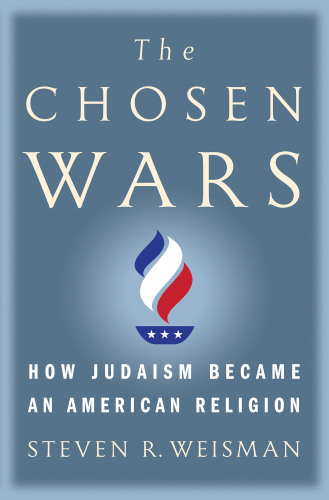
The Chosen Wars
How Judaism Became an American Religion
فرمت کتاب
ebook
تاریخ انتشار
2018
نویسنده
Steven R. Weismanناشر
Simon & Schusterشابک
9781416578994
کتاب های مرتبط
- اطلاعات
- نقد و بررسی
- دیدگاه کاربران
نقد و بررسی

May 1, 2018
An account of Jewish history in the United States until 1900, focusing on how a small percentage of immigrants altered a culture and how the culture of the North American continent influenced the three branches of Judaism--Orthodox, Conservative, and Reform.A former reporter and editor for the New York Times, Weisman (The Great Tradeoff: Confronting Moral Conflicts in the Era of Globalization, 2016, etc.), who is now the vice president for publications and communications at the Peterson Institute for International Economics, clearly understands the writing techniques needed to prevent a detailed religious history from becoming too dry. Beginning with the mid-17th century, the author offers numerous illuminating anecdotes and outsized personalities to explain how and why the first Jews arrived in what became the U.S. more than a century later. (A full timeline and a glossary help nonscholarly readers keep track of the progression.) As Weisman shows, patches of hostility surrounded the new arrivals, but the author focuses more on doctrinal and behavioral schisms within Jewry than on interference from outsiders. Much of the doctrinal emphasis revolves around rabbis arriving from overseas, many of them from Germanic backgrounds. The most influential was Rabbi Isaac Mayer Wise, who arrived in the New World in 1846, eventually settling in Albany, New York, and later moving his base to Cincinnati. Many of the intra-Jewish battles during this time period occurred in Charleston, South Carolina. The disputes revolving around Wise included not only ancient religious doctrines, but also the insertion of sermons into the worship services, the seating of women and men separately or together, whether to conduct services in the English language, and such seemingly minor disputes about the use of organ music. As Weisman occasionally makes reference to Judaism during the 21st century, he suggests how the creation of Israel as a Jewish homeland split congregations, especially regarding war or peace with displaced Palestinians.Religious history that should interest Jews and non-Jews alike.
COPYRIGHT(2018) Kirkus Reviews, ALL RIGHTS RESERVED.

June 15, 2018
The story of how traditional Judaism transformed throughout the 19th and 20th centuries to become an American religion has many parallels with the overall changes in American life during that time. Weisman (The Great Tax War) illustrates the men and women who modernized Judaism against a backdrop of the economic realities that shaped the lives of everyday Jews. The author's background in international economics journalism helps to tease out how changing immigrant populations and available work for Jews changed their religious practice. Itinerant peddlers in the South were unable to find Kosher food, and shopkeepers already forced to close on Sundays found it uneconomical also to close on Saturdays. A centerpiece of the book discusses Jews in the Civil War, including the intellectual fight between abolitionists and slave owners, and the resonance that Abraham Lincoln had for the Jews. While there are moments of great drama, much of the changes to Jewish practice over the decades came down to work by reform-minded rabbis and other Jewish leaders, up against often reluctant synagogue boards and presidents. VERDICT Appealing and instructive to anyone who has wondered about the creation of Reform or Conservative Jewish practice.--Margaret Heller, Loyola Univ. Chicago Libs.
Copyright 2018 Library Journal, LLC Used with permission.

Starred review from June 11, 2018
Focusing mainly on the 19th century, this expertly told history from Weisman (The Great Tax Wars) explores conflicts between tradition and modernity within Judaism that first played out in Charleston, S.C., and still resonate today. When Charleston’s Congregation Beth Elohim was reopened in 1841 after a fire, its members confronted some major proposed changes: the addition of an organ and the elimination of some traditional doctrines (such as the belief in a messianic redeemer). The innovations did not sit well with everyone, and the dispute eventually ended up in court. Weisman traces how these same controversies played out regionally and nationally, primarily through the experiences of Albany rabbi Isaac Mayer Wise, whose campaign for reform eventually led to a fistfight during Rosh Hashanah services between his supporters and detractors. Colorful incidents like this add flair to the serious subject matter. For Weisman, the lesson of the history is that “Jews should be unafraid to stand up for how they want to pursue their varied religious paths towards meaning” and that the “courageous examples” of those who did so in the past should give hope to the present generation. Anyone interested in American Judaism will be enlightened by this lucid and entertaining history.

























دیدگاه کاربران